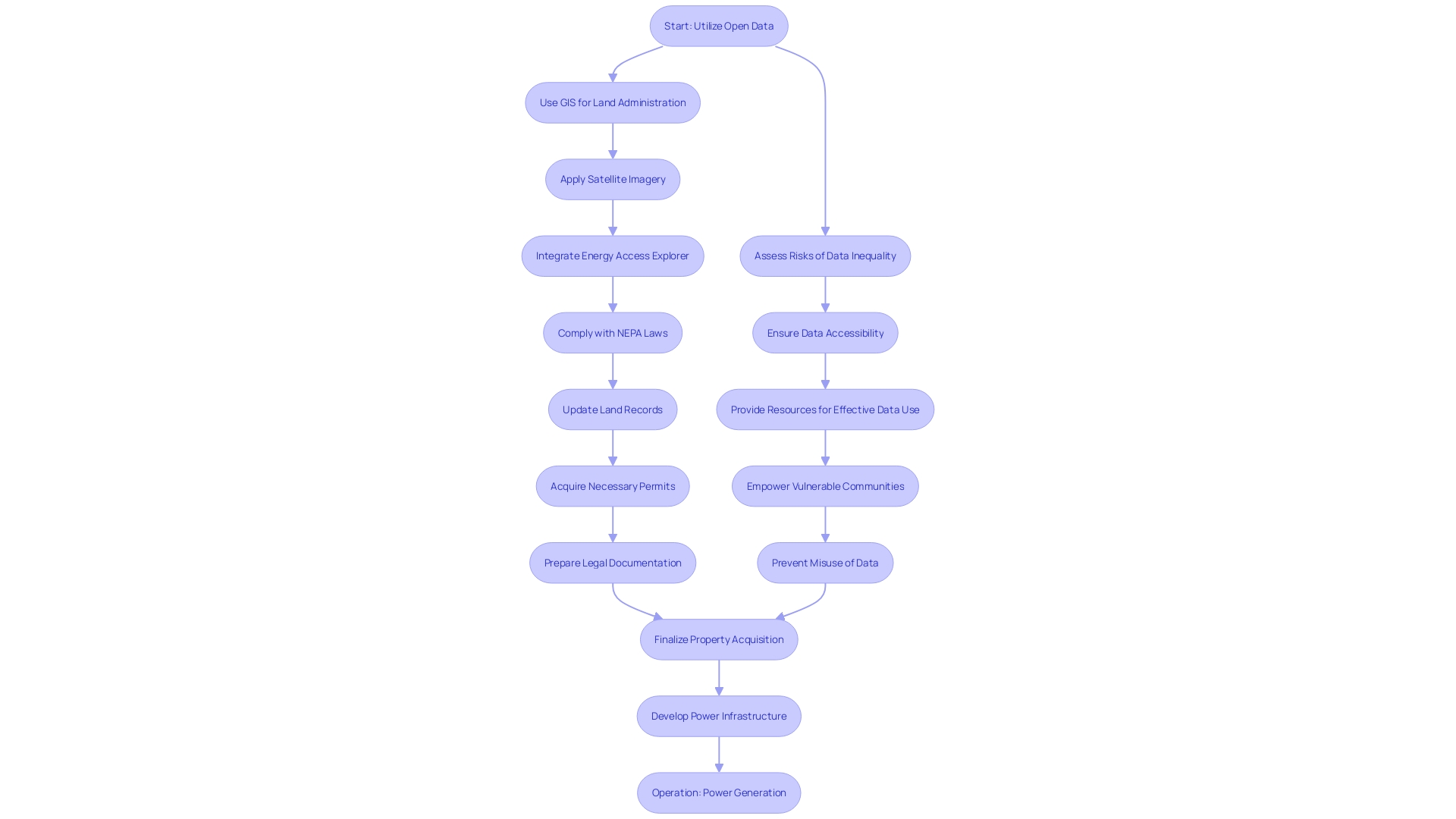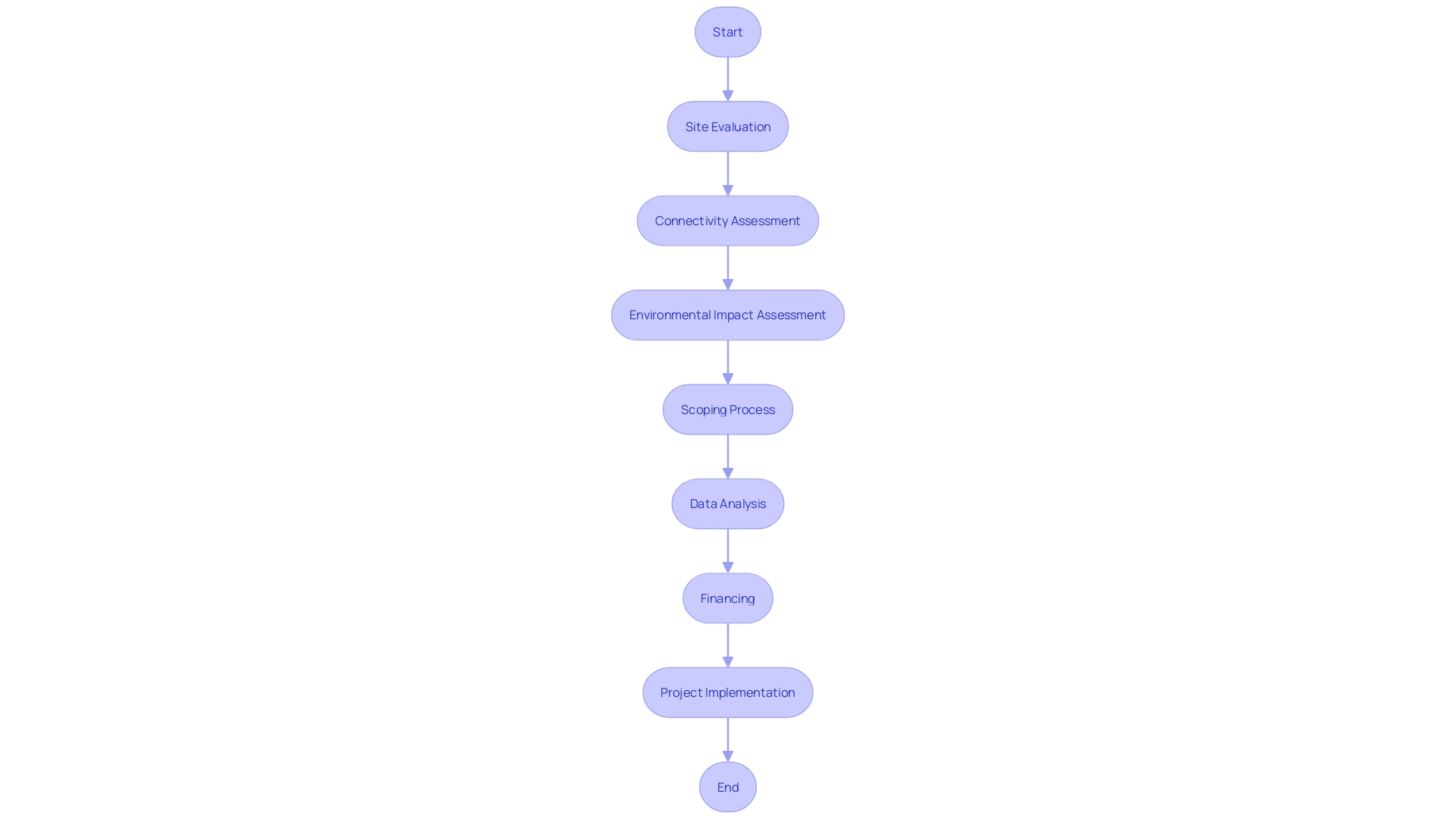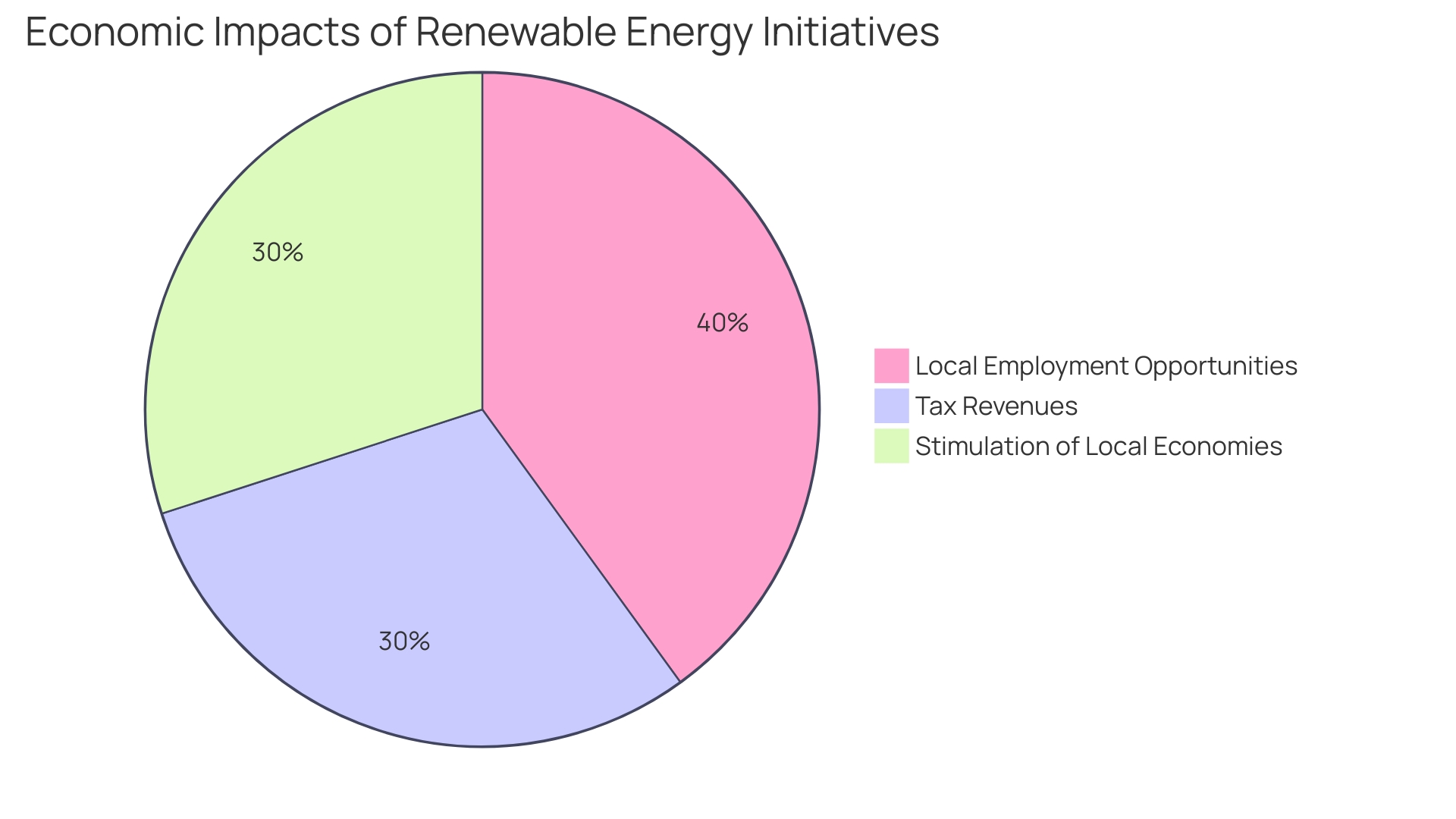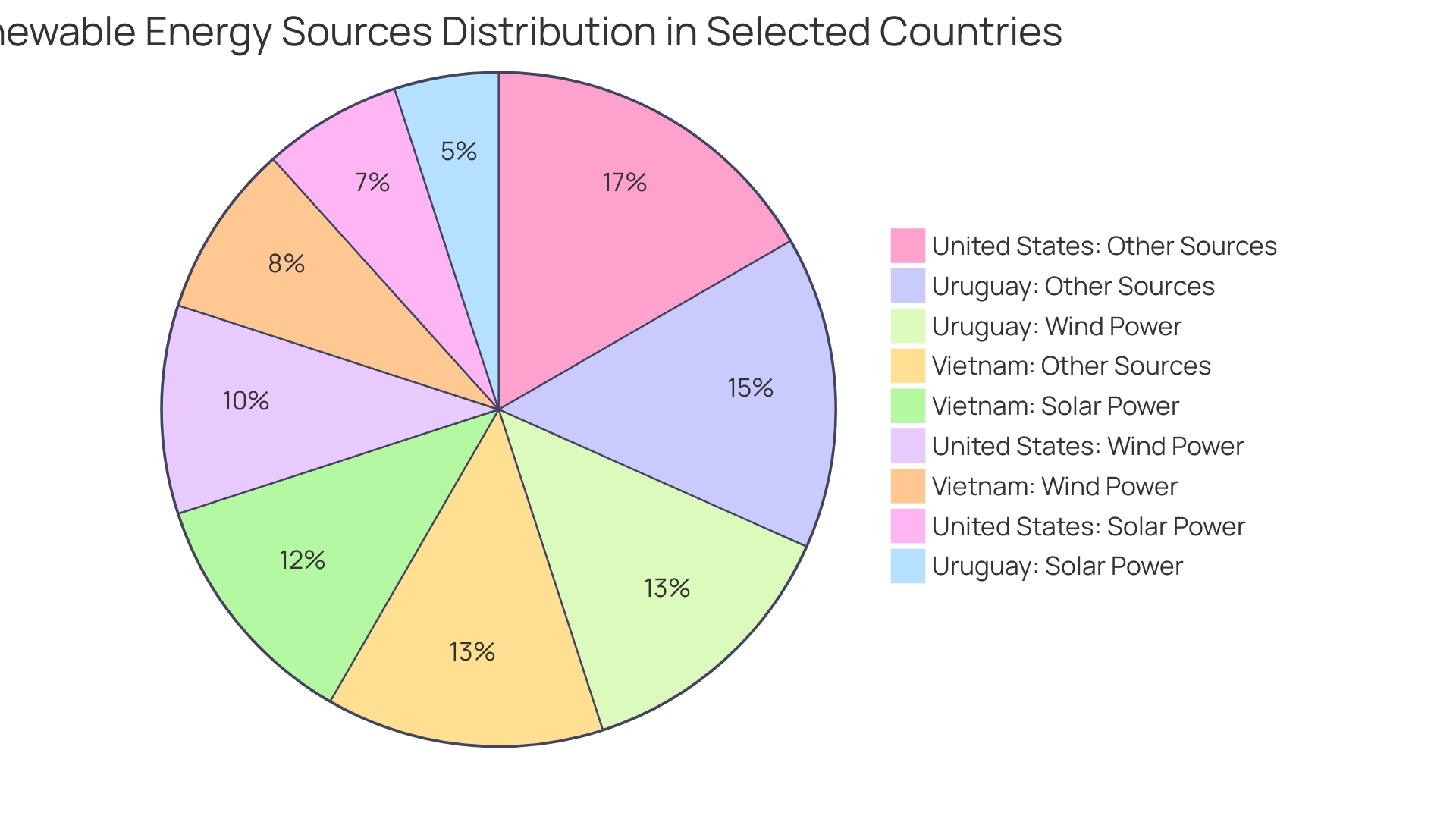Introduction
Land acquisition is a crucial process for renewable energy projects, requiring professionals to secure sites that comply with environmental regulations and meet logistical demands. This article explores the challenges faced in land acquisition, the role of technology in streamlining the process, the importance of site identification, and the complexities of permitting and zoning. It also delves into community concerns and the need for community support in energy development projects.
Additionally, the article highlights the role of land acquisition experts in effective land management and the economic implications of renewable energy projects. With case studies showcasing successful land acquisition strategies, this article provides valuable insights into the multifaceted world of land acquisition for renewable energy projects.
Challenges in Land Acquisition for Renewable Energy Projects
Land acquisition is a pivotal process in the deployment of renewable energy initiatives, where professionals are tasked with procuring sites that not only comply with environmental regulations but also meet the logistical demands of such developments. For example, solar farms require extensive areas that are exposed to abundant sunlight, while wind ventures need sites with consistent wind conditions and access to power grids. The complexities of property acquisition are intensified by the need to be in accord with local communities and biodiversity, avoiding legal and political disputes that could postpone projects.
Acquiring space for climate-smart infrastructure is both a worldwide and regional challenge, as witnessed in India's National Solar Mission. The achievement of the objective, resulting in an almost widespread electricity availability by 2021, emphasizes the significance of access to property in achieving sustainable power objectives. However, the pursuit to obtain property is filled with barriers, including the potential impact on property values and community opposition stemming from environmental, aesthetic, or cultural concerns.
Recent agreements, such as the collaboration between solar developers and environmentalists in the United States, demonstrate a shift towards more inclusive planning processes. These agreements aim to expedite the shift to sustainable power sources and promote the advancement of extensive solar initiatives by tackling land-use and biodiversity concerns in the early stages, thus aiding the battle against climate change.
Professionals in the field must navigate not only the regulatory and permitting labyrinth but also the delicate balance of stakeholder interests. This includes addressing the concerns of local tribes, property owners, and environmental groups. The knowledge of acquisition specialists is vital in addressing these challenges, ensuring that renewable power projects can progress effectively and sustainably.

The Role of Technology in Land Acquisition
Utilizing technology greatly improves the effectiveness of acquiring property for the development of power. Geographic Information Systems (GIS) and cutting-edge satellite imagery have revolutionized site selection, allowing for rapid identification and assessment of potential development areas. These tools offer a comprehensive examination of land utilization, environmental considerations, and access to infrastructure. The Energy Access Explorer (EAE) in Tanzania exemplifies this transformation, offering over 70 datasets including mini-grid data, to facilitate energy market expansion and integration.
However, the incorporation of technology in acquisition is not without challenges. Laws such as the National Environmental Policy Act (NEPA) can introduce delays and escalate costs, complicating the development process. Despite these hurdles, technology continues to play a critical role in managing land records, permits, and legal documentation, streamlining the acquisition process, and promoting transparency.
In contexts like Tanzania, where over 30 million people lack basic electricity services, the availability of reliable data is crucial for planning and executing power projects. The capacity to collect and evaluate such data can have a substantial influence on the expenses and structure of systems, propelling the achievement of efforts targeted at offering clean and modern power.
As the industry evolves, with new agreements attempting to unify various stakeholders in the pursuit of renewable resource development, the importance of technological applications in land acquisition is underscored. These tools are not just facilitating the process but are also crucial in navigating the complex regulatory landscape and stakeholder interests that define the power sector.

Streamlining Site Identification and Land Acquisition
Land acquisition specialists are at the forefront of transforming the landscape of energy by pinpointing and procuring sites that align with the multifaceted demands of energy initiatives. They engage in comprehensive site evaluations, weighing key factors such as land readiness, connectivity to existing infrastructure, and potential ecological repercussions. Their role is to navigate through a maze of technical, environmental, and logistical considerations, ensuring that the chosen sites optimize both sustainability and project feasibility.
In the realm of renewable power, the importance of site selection cannot be overstated, as shown by the expansive solar farms which require an estimated 5 to 10 acres per megawatt to harness the sun's power effectively. The Solar Energy Industries Association emphasizes this large spatial demand, highlighting the necessity for skilled professionals who can secure such vast areas.
The International Energy Agency underscores the rapid expansion of solar power as the fastest-growing new source globally, which further accentuates the pivotal role of land acquisition experts in the sector's evolution. They are not just facilitating the growth of renewable sources but are also contributing to a more sustainable future, with solar farms playing an increasingly crucial role in fulfilling global energy needs sustainably.
Using a cooperative and inclusive strategy, these experts also strive to establish a strong basis of confidence and comprehension regarding the transition in power. They are part of a global community, working in environments that encourage the free exchange of ideas and experiences, ultimately driving positive change across the power landscape.
Moreover, the complexities of environmental impact assessments (EIAs) necessitate a precise scoping process to pinpoint the most consequential environmental implications. As the first step in the EIA, scoping is critical in setting the direction and identifying necessary research areas, thereby shaping the entire assessment and informing consultants' terms of reference.
Sustainability and the diverse perspectives it entails are central to the land acquisition process. The environmental and social impacts of infrastructure for power are unique to each project, demanding a holistic and comprehensive data analysis. This method enables a more precise evaluation of the sustainability of alternative power, considering the peculiarities of technology, deployment approaches, and location.
The professionals in this field are not only instrumental in enabling the development of climate-smart infrastructure but also in bridging the financing gap for climate adaptation. With the expense of adjustment in developing nations possibly reaching $390 billion this decade, the effective acquisition of property becomes a gatekeeper to the much-needed increase in private financing for sustainable power and related infrastructure investments.
Essentially, professionals specializing in the acquisition of property are the underappreciated champions clearing the path for a more sustainable world, utilizing their knowledge to overcome the obstacles and intricacies inherent in the advancement of eco-friendly initiatives.

Navigating Permitting and Zoning Complexities
Understanding the complex network of permitting and zoning is a crucial responsibility for professionals in land acquisition, especially in the field of development. These professionals are tasked with the meticulous preparation and submission of permit applications, ensuring they align with stringent regulatory frameworks such as the National Environmental Policy Act (NEPA) and its state-specific counterparts like CEQA. The challenges are manifold; proponents of environmental protection and local community members often employ these regulations to introduce significant delays—ranging from 2 to 6 years—and escalate compliance costs, which can jeopardize the feasibility of power projects.
Additionally, a recent report highlights the varied and intricate character of sustainable power planning and approval procedures throughout the United States. Jeff Marootian, the Principal Deputy Assistant Secretary for Energy Efficiency and Renewable Energy, emphasized the significance of this report for policymakers at different levels of government. He emphasized the provision of an interactive map designed to assist users in navigating each state's distinctive siting and permitting landscape, a tool that brings transparency and expediency to the development of renewable power infrastructure.
The importance of expediting clean energy initiatives has also been demonstrated in a groundbreaking agreement between solar developers, environmentalists, and other stakeholders. After extensive negotiations facilitated by leading organizations such as the Stanford Woods Institute for the Environment and the Nature Conservancy, this consensus aims to streamline the creation of large solar farms by preemptively addressing concerns related to the use of property and biodiversity. This collaborative approach offers a blueprint for more harmonious and efficient development, mitigating the historical pattern of legal and political standoffs.
Amidst this backdrop, land acquisition experts must adeptly manage and anticipate the potential hurdles within the permitting and zoning arenas. Their function is not only crucial in advancing power initiatives but also in protecting the equilibrium between developmental aspirations and environmental stewardship. As these professionals work to unravel regulatory complexities, their efforts contribute to the broader goal of promoting a sustainable and clean future.

Addressing Community Concerns and Building Support
Land acquisition experts acknowledge that obtaining community backing is crucial for the triumph of development endeavors. Through a collaborative approach, these professionals are not just engaging with local communities but are also actively integrating their perspectives into the planning and implementation of projects. A notable example of this approach is the ongoing engagement with multiple Native Nations in the western United States. This two-year initiative seeks to align power generation development with the Tribes' priorities, combining qualitative insights from interviews with Tribal leaders and members with quantitative analysis to model future power production scenarios and potential revenues. The Southern Ute Indian Tribe is one of the participants, and their involvement exemplifies the importance of respectful and supportive partnerships in transitions.
In the broader context, the Australian Government's acceptance of the Community Engagement Review recommendations highlights the global trend towards meaningful stakeholder engagement. Likewise, global platforms are investigating creative stakeholder involvement approaches in the power field, highlighting the exchange of knowledge and the assessment of engagement tactics.
These efforts underscore the crucial role of two-way engagement, as noted by RMI research, which asserts that the signing of a legal agreement, while important, is not sufficient on its own. True representation of the entire community's interests is fundamental to avoid the backlash seen in past community engagement efforts. Sarah Mills from the University of Michigan further emphasizes this point, noting that social acceptance has become a significant factor in the implementation of sustainable power sources as costs have decreased.
The statistics provided by our solutions mapping tool further illustrate the diverse landscape of transition projects, which go beyond technological solutions and encompass a range of actors and features. This tool aims to democratize access to renewable power knowledge, making it readily available to those who can benefit from it the most.
The collective experiences of professionals in the field, supported by both qualitative and quantitative data, are shaping the future of power generation in a way that is more inclusive, transparent, and beneficial to all stakeholders involved.

Effective Land Management for Sustainable Energy Development
Land acquisition experts play a crucial role in balancing the development of projects with environmental stewardship and community benefits. This equilibrium is demonstrated in the practice of agrivoltaics, a growing domain where the same area is simultaneously utilized for solar power generation and agriculture. Agrivoltaics not only enhance use efficiency but also support local food production, thereby embodying sustainable and just management.
In the pursuit of sustainable power, land acquisition experts play a crucial role in locating and obtaining appropriate locations for solar farms, which necessitate around 5 to 10 acres per megawatt of generating capacity. Furthermore, they strive to reduce the effects on the environment, a duty emphasized by the recent increase in the use of sustainable resources. For example, the European Union's push toward renewable sources emphasizes the significance of environmentally friendly and economically viable solutions, with solar power playing a central role.
A case study from Chiba Prefecture, Japan, showcases the meticulous process experts undertake in aligning development with local desires and ecological considerations. In this case, a customer looked for a property that combined closeness to the environment with easy access, a prevalent concept in acquiring properties for power projects. In the same way, the incorporation of wind turbines on a ranch in the United States shows the possibility for sustainable power framework to exist together with local fauna, such as bison, without major disturbance.
Despite these successes, challenges persist, such as reconciling various stakeholder interests. A recent agreement among diverse groups, excluding fossil fuel representatives, showcases the ongoing efforts to navigate this complex landscape. The program that focuses on the scale highlights the importance of just governance of territory and its connection with climate change, supporting the expansion of efficient utilization practices.
These initiatives and case studies highlight the importance of sustainable land management in the development of power, ensuring that the expansion of eco-friendly energy sources like solar farms proceeds in an environmentally responsible and community-supportive manner.
Economic Implications of Renewable Energy Projects
The strategic role of land acquisition professionals in renewable energy initiatives extends beyond mere property negotiations to a comprehensive analysis of the initiatives' economic impacts. These include the generation of local employment opportunities, an increase in tax revenues, and the stimulation of local economies. These professionals are integral in forging productive collaborations with local governments, businesses, and community groups, ensuring that the economic advantages are maximized for the community's benefit.
A recent study, covering the entire United States housing market and wind turbine installations in the last 15 years, uncovers the subtle effects these endeavors can have on property values. The research suggests that while wind developments in rural areas demonstrate no significant impact on property values, those in urban regions can have a negative effect. This understanding is essential for land acquisition experts as they strive to strike a balance between the advantages of sustainable power initiatives and the worries of nearby inhabitants.
Furthermore, the case of Viet Nam's Lotus Wind Power Project, backed by the ADB, highlights the potential economic contribution of sustainable power projects. This endeavor is anticipated to contribute almost $90 million to the nation's GDP during its construction phase and produce around $14 million per year for the next twenty years. Modeling such economic impacts can guide policy decisions and emphasize the importance of promoting an environment conducive to green investments.
Contemporary studies, like the one analyzing 428 wind farms and their proximity to about 500,000 property sales, provide communities with valuable data to inform their decisions regarding wind farm development. As additional data accumulates over time, these findings become integral to community dialogues, contrasting with earlier studies that identified minimal or no negative effects on property values.
In the ever-changing domain of sustainable power, professionals responsible for acquiring property not only manage the intricacies of obtaining land but also have a crucial part in evaluating and conveying the wider economic implications to interested parties, thus enhancing the long-range prosperity and community approval of these initiatives.

Case Study: Successful Land Acquisition Strategies
The growth of the renewable energy industry presents both advantages and difficulties, especially in regard to acquiring suitable areas for sustainable energy initiatives. A case in point is Uruguay's approach to leveraging its abundant wind resources. Despite not having domestic fossil fuels, the country acknowledged the potential of its extensive, unpopulated agricultural areas. This foresight led to a strategy that transformed these areas into power-generating landscapes, with wind turbines now supplying approximately 40% of Uruguay's electricity.
The success of such initiatives is not isolated. In the United States, efforts to streamline the advancement of large solar initiatives are underway. For example, a collaborative agreement among solar developers, environmentalists, and other stakeholders aims to tackle land-use and biodiversity concerns which often delay solar farms. This consensus was achieved through the Stanford Woods Institute for the Environment, the Solar Energy Industries Association, and the Nature Conservancy, illustrating the importance of multi-stakeholder engagement in resolving conflicts.
The environmental consequences of acquiring and developing properties for sustainable power initiatives cannot be disregarded. In Massachusetts, over 5,000 acres of natural and working areas have been transformed for solar development since 2010, negatively impacting local ecosystems. To address such concerns, Vietnam's strategy to achieve its ambitious goals of reducing carbon emissions by 2030 involves the growth of sustainable power sources, with the wind power capacity expected to reach 5,059 MW in 2022.
Landowners considering solar leases must navigate complex regulatory landscapes, which include zoning laws and environmental assessments. With leases typically spanning twenty to thirty years, dual-use practices can optimize land utility, allowing for agricultural activities alongside power generation.
Understanding the financial implications of solar farming is crucial, as the income per acre can vary based on several factors. Solar farms, which require 5 to 10 acres per megawatt of capacity, have become an essential part of the renewable power mix. With solar power being the fastest-growing new energy source worldwide, the role of solar farms in sustainable energy production is increasingly significant.

Conclusion
In conclusion, land acquisition for renewable energy projects is a complex process that requires professionals to navigate challenges such as compliance with regulations, logistical demands, and community concerns. Technology streamlines the process by facilitating site identification and assessment. Land acquisition specialists play a pivotal role in managing land for sustainable energy development, conducting comprehensive evaluations and ensuring project feasibility.
They navigate permitting and zoning complexities, contributing to a more sustainable and clean energy future. Building community support is essential, and professionals engage with local communities to integrate their perspectives into planning. Economic implications, such as employment opportunities and tax revenues, are also analyzed.
Successful strategies have been demonstrated in case studies, highlighting the importance of leveraging resources and streamlining development. In essence, land acquisition professionals play a crucial role in harmonizing energy development with environmental stewardship and economic benefits, contributing to the growth of renewable energy sources and a more sustainable future.




